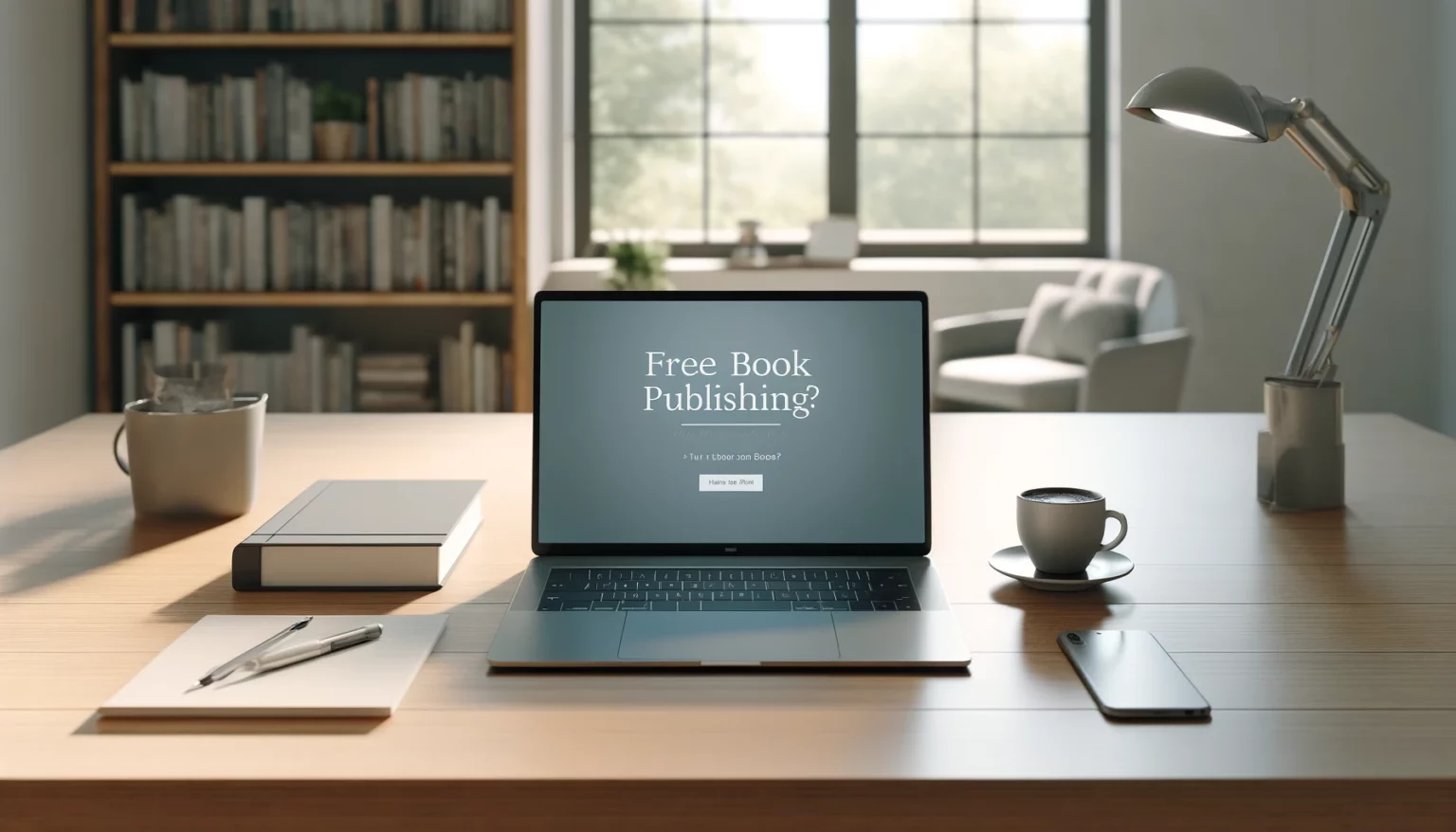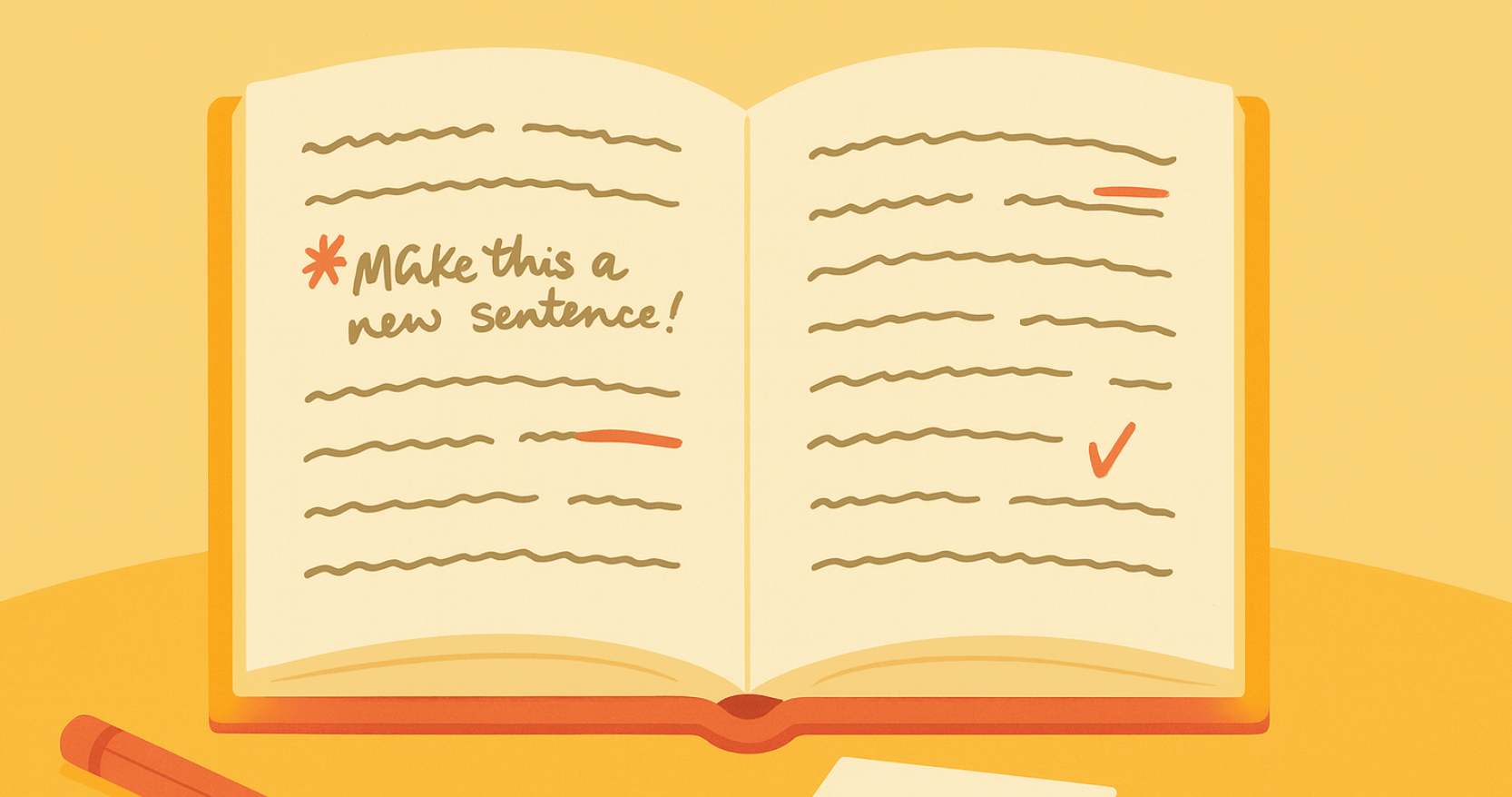Publishing a book has never been more accessible. Thanks to the rise of self-publishing and print-on-demand technology, aspiring authors can now publish a book for free—without the need for a literary agent, a publishing contract, or hefty upfront costs. The growth of digital publishing platforms has played a significant role in this shift, enabling authors to distribute their work globally with ease. In fact, Amazon Kindle Direct Publishing (KDP) alone has enabled more than 2 million authors to self-publish their books, with many earning substantial royalties in the process.
Traditionally, publishing a book required financial investment, covering expenses like editing, cover design, printing, and distribution. However, with platforms like Amazon KDP, authors can now bypass these costs and publish eBooks and print books at no charge. Some of these platforms even provide free book publishing with ISBN, further reducing the expenses associated with getting your book into online bookstores.
But can you really publish a book for free and make money from it? The answer is yes—but strategy matters. While free publishing platforms give you access to millions of potential readers, earning from your book requires understanding royalties, distribution channels, and book marketing. For instance, self-published authors on Amazon KDP can earn up to 70% royalties on eBook sales, and print-on-demand services allow authors to sell paperbacks globally without stocking inventory.
We’ll explore how to publish a book for free, the best free self-publishing platforms, and effective ways to monetize your work. Whether you write novels, non-fiction, or children’s books, you’ll discover how to turn your manuscript into a published book—without any upfront costs.
How Free Publishing Works
Publishing a book for free is possible because of three major shifts in the industry: the rise of self-publishing, the emergence of digital self-publishing platforms, and the adoption of print-on-demand (POD) technology. These innovations have eliminated upfront printing, distribution, and retail costs, allowing authors to publish professionally without spending a dime. In fact, self-publishing now accounts for over 30% of all eBook sales on Amazon, proving that independent authors can succeed without traditional publishing gatekeepers.
Here’s how it works:
1️. Digital Publishing is Free – Platforms like Amazon KDP, Draft2Digital, Google Play Books, and Apple Books allow authors to upload, format, and distribute eBooks globally at no cost. These platforms make money by taking a small percentage of book sales, meaning authors only pay after they start earning. Many of them also provide free ISBNs, removing a common publishing expense.
2️. Print-on-Demand (POD) Eliminates Printing Costs – Traditional publishing requires bulk printing and storage, which can cost thousands upfront. POD technology changes this by printing books only when they are ordered. Services like Amazon KDP Print and Lulu handle printing, shipping, and distribution without requiring authors to invest in inventory.
3️. Royalties Cover Costs Instead of Upfront Fees – Self-publishing platforms generate revenue through a revenue-sharing model. Authors keep up to 70% of royalties on eBook sales, and for print books, platforms deduct the printing cost from the sale price, so authors never pay out of pocket.
4️. Marketing & Distribution Are Digital-First – Unlike traditional publishing, where authors often pay for promotion, self-publishing platforms optimize book visibility through built-in recommendation systems, category rankings, and search algorithms. Authors can also use free marketing strategies like social media, email lists, and book giveaways to maximize reach.
This digital-first approach makes publishing a book free while ensuring authors still have access to global retailers and professional-quality printing.
How to Publish a Book for Free and Get Paid for It
Publishing a book for free is just the first step—the real goal for many authors is to turn their writing into a source of income. The good news? Self-publishing platforms allow authors to earn money from book sales without any upfront costs. The key to making a profit lies in understanding royalties, choosing the right pricing strategy, and using smart marketing techniques to reach readers.
Here’s how you can publish for free and actually get paid:
1️. Earn Royalties Through Self-Publishing Platforms
Most free self-publishing platforms follow a royalty-based model, meaning you earn money every time someone buys your book. Here’s a breakdown of how royalties work on top platforms:
- Amazon KDP – Earn up to 70% royalties on eBooks priced between $2.99 and $9.99. Print books are sold via print-on-demand (POD), where printing costs are deducted from each sale.
- Draft2Digital – Earn royalties from multiple retailers, including Apple Books, Barnes & Noble, and Kobo, without exclusivity.
- Google Play Books – No exclusivity requirements and up to 70% royalties on eBooks.
- Apple Books – Keep 70% of your earnings, with no delivery fees or exclusive contracts.
- Lulu & IngramSpark – Best for print books; authors earn after printing and distribution costs are covered.
💡 Pro Tip: Choose platforms that don’t require exclusivity (e.g., Draft2Digital, Apple Books) so you can sell on multiple sites and maximize earnings.
2️. Set the Right Price for Maximum Profit
Your book’s price directly affects how much you earn. Here’s how to find the best balance:
eBooks:
- Pricing between $2.99 – $4.99 often maximizes royalties while remaining affordable for readers.
- Amazon KDP offers 70% royalties for books priced $2.99–$9.99, but drops to 35% outside this range.
- Running limited-time discounts can help boost visibility and rankings.
Print Books:
- Use print-on-demand (POD) so there are no upfront printing costs.
- Set a price that covers printing and distribution fees while still making a profit.
- Example: A 300-page paperback on Amazon KDP Print costs about $4.50 to print, so pricing it at $12.99+ ensures a reasonable profit margin.
💡 Pro Tip: Check competitor pricing in your genre to price competitively while maintaining profitability.
3️. Sell Directly for Higher Profits
While publishing platforms offer great exposure, selling directly can increase profits since you avoid platform fees.
How to Sell Directly:
- Author Websites – Sell your book through your own website using platforms like Shopify, Gumroad, or Payhip.
- Crowdfunding & Preorders – Use Kickstarter or Patreon to fund your book launch before publication.
- Book Bundles – Offer exclusive extras like signed copies, digital workbooks, or bonus chapters for direct buyers.
💡 Pro Tip: Selling directly also lets you collect reader emails, which is essential for long-term success and future book launches.
4️. Leverage Free Marketing to Drive Sales
Even the best book won’t sell without marketing—but you don’t need a big budget. Here’s how to promote your book for free and increase earnings:
- Social Media Marketing – Share content related to your book on Twitter, Instagram, TikTok, and Facebook.
- Book Giveaways & Free Promotions – Offer limited-time free or discounted copies to generate reviews and word-of-mouth buzz.
- Guest Blogging & Podcast Interviews – Appear on niche blogs or podcasts related to your book’s genre to reach targeted readers.
- Email Marketing – Build an email list of readers and offer exclusive updates, free chapters, or launch discounts.
💡 Pro Tip: Engage with your ideal audience rather than trying to promote your book to everyone. Focus on specific communities and genres to see better results.
5. Monetize Beyond Book Sales
Authors can earn money beyond just selling books by expanding their income streams:
- Affiliate Marketing – Recommend books, writing tools, or courses using affiliate links to earn commissions.
- Online Courses & Workshops – Teach writing, publishing, or marketing strategies based on your experience.
- Speaking Engagements & Consulting – Offer one-on-one coaching or guest speaking at industry events.
💡 Pro Tip: Think of your book as a gateway to more opportunities, like courses, paid memberships, or consulting work.
Publishing a book for free doesn’t mean earning nothing—in fact, many self-published authors make a full-time income from their books. By choosing the right platform, pricing smartly, marketing effectively, and exploring additional revenue streams, authors can publish without spending money and still turn a profit.
Choosing the Right Self-Publishing Platform
With so many free self-publishing platforms available, choosing the right one can feel overwhelming. Each platform offers different royalty rates, distribution options, and features, so it’s important to select the one that best aligns with your publishing goals. Some platforms focus on eBooks, while others specialize in print-on-demand (POD) for physical books.
Below, we’ll break down the best free self-publishing platforms, highlighting their key benefits and considerations.
Amazon Kindle Direct Publishing (KDP) – Best for Amazon Exposure
Why Choose KDP?
- The largest self-publishing platform with direct access to Amazon’s global audience.
- Earn up to 70% royalties on eBooks priced $2.99–$9.99.
- Offers free ISBNs for paperbacks published through KDP Print.
- Print-on-demand model, so no upfront printing costs.
- Option to enroll in KDP Select, which provides extra visibility in exchange for 90-day exclusivity.
Considerations:
✔ Best for eBooks & print books
✔ High royalties, especially for eBooks
✘ KDP Select requires exclusivity if enrolled
✘ No distribution to other retailers (Amazon-only)
Read more about strategies for mastering self-publishing on Amazon KDP here.
Draft2Digital (D2D) – Best for Wide Distribution
Why Choose Draft2Digital?
- Distributes to multiple retailers (Apple Books, Barnes & Noble, Kobo, Tolino, OverDrive, and libraries).
- No exclusivity requirements, so you can sell on multiple platforms.
- Automatic formatting makes it easy for beginners.
- Provides a free ISBN for all books published through their platform.
- Print-on-demand now available through D2D Print.
Considerations:
✔ Best for authors who want to sell beyond Amazon
✔ Free ISBN & automatic formatting
✘ No direct store like Amazon (relies on partners)
✘ Takes a percentage of sales (but no upfront costs)
Google Play Books – Best for Global Reach
Why Choose Google Play Books?
- Earn up to 70% royalties, even on books priced below $2.99.
- No exclusivity requirements, so you retain full control.
- Integrated with Google’s powerful search engine, making books easier to discover.
- Available in 75+ countries, expanding international reach.
Considerations:
✔ Great for discoverability (Google integration)
✔ No exclusivity, high royalties
✘ Can be harder to set up an account (Google has strict verification steps)
✘ No print option—eBooks only
Apple Books for Authors – Best for Apple Users
Why Choose Apple Books?
- Direct access to Apple device users (iPhone, iPad, Mac).
- 70% royalties on all eBook sales, regardless of price.
- No exclusivity required, so you can sell on other platforms.
- Free to publish, but authors must provide their own ISBN.
Considerations:
✔ Great for reaching iOS users
✔ Consistently high royalty rate
✘ Must have a Mac to upload books directly (or use an aggregator like Draft2Digital)
✘ Requires an ISBN (not provided for free)
Comparison Table: Best Free Self-Publishing Platforms
| Platform | Best For | Royalties | ISBN Provided? | Print Option? |
| Amazon KDP | Amazon reach & eBooks | Up to 70% | ✅ Yes (Print) | ✅ Yes (POD) |
| Draft2Digital | Wide distribution | Varies | ✅ Yes | ✅ Yes (POD) |
| Google Play Books | SEO & global reach | Up to 70% | ❌ No | ❌ No |
| Apple Books | Apple device users | 70% | ❌ No | ❌ No |
| Spines | AI-assisted publishing | Varies | ✅ Yes | ✅ Yes (POD) |
No matter which platform you choose, publishing your book for free is possible—and with the right approach, you can also make money from your writing. 🚀
Your Publishing Journey Awaits – Start NowThe Role of ISBNs and Their Costs
An ISBN (International Standard Book Number) is a unique 13-digit identifier assigned to books, making it easier for retailers, libraries, and distributors to catalog and track sales. It ensures books are correctly listed in databases, which is essential for print book distribution and for authors who want their work available in bookstores or libraries. While eBooks do not always require an ISBN, print books must have one for proper classification in retail systems.
Do You Need an ISBN for Self-Publishing?
Whether or not you need an ISBN depends on where and how you plan to publish your book:
- Print books must have an ISBN to be sold through major retailers and bookstores.
- eBooks published through Amazon Kindle (KDP) do not require an ISBN because Amazon assigns its own identifier: the ASIN (Amazon Standard Identification Number).
- Wide distribution (beyond Amazon) requires an ISBN for eBooks on platforms like Apple Books, Kobo, and Google Play Books.
For a deeper look into why ISBNs matter for self-published authors, check out this guide.
How to Get an ISBN (Free vs. Paid Options)
Authors can obtain an ISBN in two ways: by using a free ISBN from a self-publishing platform or by purchasing their own.
Free ISBNs from Publishing Services
Many self-publishing platforms offer free ISBNs to make the publishing process easier. This is a great option for authors who only plan to publish on one platform and don’t want to invest in buying an ISBN. However, free ISBNs usually come with restrictions—they are tied to the platform that issues them, meaning you can’t reuse the same ISBN if you decide to publish elsewhere in the future.
Additionally, if you use a free ISBN, the platform is often listed as the publisher of record instead of your name or imprint. This doesn’t affect ownership of your book, but it may limit distribution options if you want to sell across multiple retailers.
Buying Your Own ISBN
If you want complete control over your book’s metadata, publishing rights, and distribution, purchasing your own ISBN is the best choice. When you own the ISBN, you can publish on multiple platforms under your own imprint and make changes without restrictions.
In the United States, ISBNs are sold by Bowker, where a single ISBN costs $125, but bulk purchases bring the price down (10 ISBNs for $295). In the United Kingdom, ISBNs can be purchased from Nielsen, while Australia uses Thorpe-Bowker. Some countries, like Canada, South Africa, and India, provide ISBNs for free through their national libraries or ISBN agencies.
Before deciding, consider how you plan to distribute your book. If you’re publishing across multiple platforms and want full flexibility, buying an ISBN is a worthwhile investment. If you’re publishing on a single platform and don’t need wide distribution, a free ISBN is a cost-effective option.
Utilizing Free Publishing Tools and Software
In the evolving landscape of self-publishing, a significant majority of authors are now leveraging free tools to enhance their writing, formatting, and design processes. According to a 2024 survey by Written Word Media, approximately 76.2% of respondents identified as self-published authors, many of whom utilize these cost-effective resources to produce professional-quality books.
By effectively utilizing these free tools, authors can manage the entire publishing process from initial drafts to the final product, ensuring their book is ready for publication with minimal financial investment.
Writing and Formatting Tools
Google Docs: Ideal for writing, it offers seamless online collaboration, easy-to-use editing features, and automatic file saving to the cloud. Google Docs supports basic formatting needed for manuscripts and can export files in formats commonly used by publishers, like DOCX and PDF.
LibreOffice Writer: A powerful open-source word processor, it provides more advanced page layout options than Google Docs, resembling Microsoft Word. It’s particularly useful for detailed formatting suited to the needs of different publishers.
Scribus: For those needing to go beyond simple text formatting, Scribus is an open-source desktop publishing software ideal for creating professional layouts, including those with complex graphics and varied fonts.
Cover Design Tools
Canva: Offers a user-friendly interface with a wide range of templates specifically for book covers. Canva’s drag-and-drop design features allow authors to create eye-catching covers without prior graphic design experience.
GIMP: A free and open-source alternative to Photoshop, suitable for authors who want to create more customized and intricate designs.
Using These Tools Effectively:
- Consistency is key: Ensure that formatting is consistent throughout the manuscript, which includes margins, font sizes, and heading styles. Tools like LibreOffice allow for the creation of style templates to maintain uniformity.
- Optimize for the platform: When designing covers or formatting pages, consider the specific requirements of the intended publishing platform. For instance, Amazon KDP has particular size and quality requirements for cover images.
- Leverage templates and tutorials: Utilize the built-in templates and online tutorials offered by tools like Canva and Google Docs to enhance your design and formatting skills.
By effectively utilizing these free tools, authors can manage the entire publishing process from initial drafts to the final product, ensuring their book is ready for publication with minimal financial investment.
Marketing Your Book on a Budget
For self-published authors, marketing is just as important as writing the book itself. Without the support of a traditional publisher, the responsibility of promoting and selling the book falls entirely on the author. However, effective marketing does not have to be expensive. With the right approach, you can boost visibility, build a loyal readership, and increase sales—all with little to no budget.
Why Marketing Matters for Self-Published Authors
Marketing ensures that your book reaches the right audience and stands out in a highly competitive market. It also helps you build your brand as an author, leading to increased recognition, book sales, and future publishing opportunities. Even the most well-written book may go unnoticed without a solid marketing effort, so a well-planned strategy is essential.
Luckily, there are several free or low-cost marketing strategies that can make a big impact.
Strategies for Effective Low-Cost Marketing:
1. Social Media
Platform Selection: Choose platforms where your audience is most active:
- Instagram & TikTok (#BookTok) – Best for fiction, YA, and romance authors.
- Twitter & Reddit – Ideal for writing communities and discussions.
- Facebook & LinkedIn – Great for non-fiction and business books.
Content Variety: Mix promotional posts with engaging content such as:
- Writing tips, book recommendations, and behind-the-scenes insights.
- Polls, Q&A sessions, and interactive discussions.
Engagement: Actively respond to comments, use book-related hashtags, and collaborate with other authors.
💡 Why This Works: Social media builds a direct connection with potential readers and increases organic reach through shares and engagement.
2. Book Giveaways & Free Promotions
Giveaways on book-related platforms:
- Goodreads & LibraryThing – Attract early readers and reviews.
- Social media contests – Encourage audience participation with “tag a friend” giveaways.
Leverage Amazon KDP’s free promotions:
- Enroll in KDP Select to offer your eBook for free for up to 5 days.
- Increases rankings and visibility in Amazon’s algorithm, leading to more organic sales.
💡 Why This Works: Giveaways generate buzz, encourage word-of-mouth marketing, and help increase reviews—which are crucial for book sales.
3. Blogging & Guest Posts
Start a Blog:
- Share your writing journey, book updates, and personal experiences related to your genre.
- Helps improve SEO and attract organic traffic to your website.
Guest Post on Established Blogs:
- Write for popular writing and book review blogs like The Creative Penn or Self-Publishing School.
- Reach a broader audience outside your existing network.
Get Featured on Podcasts & Interviews:
- Many book-related podcasts interview authors for free.
- Look for indie author-friendly podcasts in your genre.
💡 Why This Works: Blogging and guest appearances establish authority, boost SEO, and expand reach to new potential readers.
4. Email Marketing & Newsletters
Grow Your Email List:
- Offer a freebie (e.g., sample chapter, bonus content) in exchange for sign-ups.
- Add a newsletter sign-up form to your blog, website, and social media.
What to Include in Newsletters:
- Book updates, launch announcements, and exclusive content.
- Special offers and behind-the-scenes insights.
- Writing tips and personal stories to keep readers engaged.
💡 Why This Works: Email marketing ensures direct communication with your audience and allows you to promote books without relying on social media algorithms.
Marketing Without Spending a Fortune
Effective book marketing doesn’t require a big budget—it requires time, creativity, and strategic engagement. By leveraging free marketing tools like social media, book giveaways, blogging, and email marketing, you can reach new readers, increase book sales, and grow your author brand—all without spending a dime.
💡 The key takeaway? Consistency and engagement matter more than money when it comes to book promotion.
Case Studies: How Free Publishing Can Lead to Success
The self-publishing world is filled with remarkable success stories that highlight the potential and viability of publishing a book for free. These case studies not only serve as inspiration but also provide valuable insights into the strategies that have helped authors achieve widespread recognition.
Beyond using free publishing platforms, many authors have found success by leveraging Amazon Kindle Direct Publishing (KDP) and other self-publishing services that offer global distribution networks. This allows independent authors to reach a broader audience worldwide, significantly enhancing their chances of success. The impact of these platforms cannot be overstated, as they provide essential tools, print-on-demand services, and marketing opportunities—helping self-published books find their way into readers’ hands across the globe.
E.L. James – From Fan Fiction to International Bestseller
Book: Fifty Shades of Grey
Path to Success: Fan fiction → Self-published eBook → Traditional publishing deal
E.L. James originally published Fifty Shades of Grey as fan fiction on a free website, where it quickly gained viral popularity through word-of-mouth and online forums. As reader interest grew, she self-published the book as an eBook and print-on-demand edition, making it available for purchase before any traditional publisher took notice. By leveraging social media buzz and direct engagement with readers, she continued to expand her audience. The book’s rapid success attracted a major publishing deal, ultimately leading to over 150 million copies sold and a blockbuster film franchise.
💡 Key Takeaway: A strong online community and grassroots marketing can turn an independently published book into a global phenomenon.
Andy Weir – From Free Blog to Hollywood Film
Book: The Martian
Path to Success: Blog posts → Self-published eBook → Bestseller & movie deal
Andy Weir began by posting chapters of The Martian for free on his personal blog, where readers quickly became engaged and provided feedback. As interest in the story exploded, fans urged him to make the book more widely available. In response, he self-published it for free on Amazon Kindle, where it rapidly gained traction. The book’s overwhelming success caught the attention of traditional publishers, leading to a major publishing deal and a Hollywood film adaptation starring Matt Damon.
💡 Key Takeaway: Publishing for free on your own platform can help you build an audience and validate demand—leading to bigger opportunities.
Lessons from These Self-Publishing Success Stories
1. Start Small, Think Big: Both authors started by sharing their work for free on platforms that required no financial investment, focusing on building an audience first.
2. Leverage Social Media and Online Communities: Utilizing online platforms to engage with readers and gather feedback can create a viral effect, significantly increasing a book’s visibility.
3. Quality Matters: Despite minimal costs, maintaining high quality in both writing and presentation was crucial for these authors. Investing time in editing and formatting, or using free tools effectively, helped ensure their books met reader expectations.
4. Adapt and Evolve: Both authors adapted their strategies in response to reader feedback and opportunities. E.L. James shifted from fan fiction to self-published eBook, and Andy Weir transitioned from a personal blog to a commercial platform.
Potential Pitfalls of Free Publishing
While free publishing platforms offer numerous advantages, such as cost savings and complete creative control, they also come with challenges that can impact the success of a book. Understanding these potential pitfalls is crucial for authors aiming to maximize the effectiveness of their self-publishing efforts.
1. Lack of Professional Guidance: Free publishing often means going it alone without the support of professional editors, designers, and marketers. This can lead to missed errors and less polished final products.
Solution: Utilize peer reviews, beta readers, and free online resources and workshops to improve your manuscript and cover design. Engaging with writer communities can also provide critical feedback and advice.
2. Limited Marketing and Distribution Reach: Self-published authors generally have fewer marketing tools and a smaller distribution network compared to traditional publishing.
Solution: Leverage social media platforms, blogs, and local communities for marketing. Consider small advertising spends on targeted platforms if possible. Use aggregation platforms like Smashwords to expand distribution.
3. Quality Concerns: Free publishing sites and tools often lack the sophistication of professional software, which can result in lower-quality layouts and designs.
Solution: Invest time in learning how to effectively use these tools through tutorials and user guides. Opt for simple, clean designs that are achievable with basic tools to maintain a professional appearance.
By being aware of these pitfalls and actively seeking ways to mitigate them, authors can successfully navigate the complexities of free publishing. Ensuring a high standard of quality and using strategic marketing can significantly enhance the book’s reception and success.
Free Publishing, Unlimited Potential
Self-publishing has removed barriers that once restricted aspiring authors. Today, publishing a book for free is not just possible—it’s an opportunity to build a successful writing career without financial risk.
By leveraging platforms like Amazon KDP, Draft2Digital, Google Play Books, and Lulu, authors maintain full creative control while reaching a global audience. Success stories like E.L. James and Andy Weir prove that free publishing can lead to major opportunities, from bestsellers to film adaptations.
At the same time, digital publishing is booming. According to The Business Research Company, the market is set to grow from $52.61 billion in 2024 to $58.73 billion in 2025, with further expansion to $88.16 billion by 2029. This surge, driven by mobile growth and digital content demand, presents even greater opportunities for self-published authors.
However, strategy is key. Publishing is just the first step—marketing, pricing, and audience engagement turn a book into a sustainable income stream. As digital publishing continues to expand, staying informed and adapting will be essential for success.
Read more about the top free book publishing companies here.
FAQs – Can I Publish a Book for Free?
Can I really publish a book for free?
Yes! Platforms like Amazon KDP, Draft2Digital, Google Play Books, and Lulu allow authors to publish eBooks and print books at no cost. These platforms only take a percentage of sales, so you only pay when you make money. Some even provide free ISBNs, eliminating another common publishing expense.
How can I publish a book on Amazon for free?
You can self-publish for free using Amazon Kindle Direct Publishing (KDP). Simply upload your manuscript and cover, format it using KDP’s tools, and set your price. There are no upfront costs, and Amazon prints physical books on demand, deducting printing costs from each sale.
Is it profitable to self-publish?
Yes, but strategy matters. Many self-published authors earn money through royalties, direct sales, and marketing efforts. Amazon KDP, for example, offers up to 70% royalties on eBooks priced between $2.99 and $9.99. Success depends on pricing, marketing, and audience engagement.
How much do self-published authors make per book?
Earnings vary based on pricing, royalties, and sales volume. On Amazon KDP, an author selling a $4.99 eBook at 70% royalties would earn about $3.50 per sale. Print books have lower margins due to printing costs, but authors can set higher prices to increase profits.
How can I market my self-published book for free?
There are many free marketing strategies, including:
Social media marketing – Promote your book on Instagram, TikTok (#BookTok), Facebook, and Twitter.
Book giveaways – Platforms like Goodreads and LibraryThing can help generate early reviews.
Guest blogging & podcasts – Appear on niche blogs or podcasts related to your book’s genre.
Email marketing – Build a newsletter to keep readers engaged and informed.
Do I need an ISBN to self-publish?
It depends on where you publish. Amazon KDP provides a free ISBN for print books, but eBooks on Amazon do not require one (Amazon assigns an ASIN instead). For wide distribution (Apple Books, Kobo, etc.), an ISBN is required—but some platforms offer them for free.
Is it better to self-publish or go through a traditional publisher?
Self-publishing offers higher royalties (up to 70%), full creative control, and faster publication. Traditional publishing provides professional editing, design, and marketing, but authors often earn lower royalties (10–15%) and must navigate a lengthy submission process. If you want complete ownership and higher earnings, self-publishing is often the best choice.








